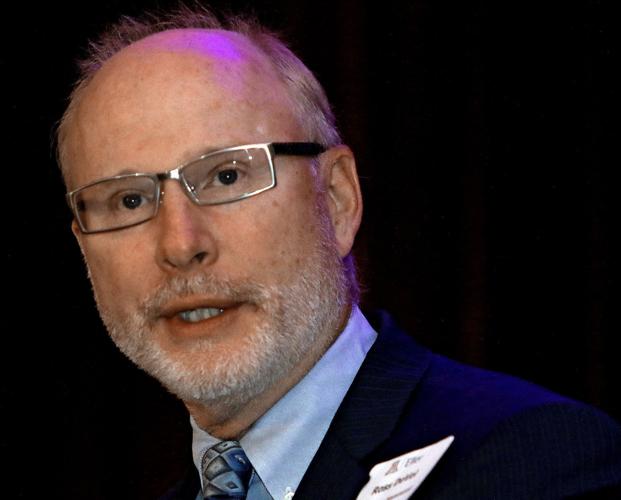Tucson’s economy is likely to see increased jobs growth and continued recovery from the recession, but sustained development is tied to educational attainment, economists said.
“Overall there’s a better forecast for the local area than what we’ve seen over the last couple of years,” said George Hammond, director of the Economic and Business Research Center at the University of Arizona’s Eller College of Management.
Speaking at a forecast breakfast at The Westin La Paloma Resort & Spa, Hammond said there’s been a big acceleration in the region’s job numbers. The Tucson metropolitan statistical area averaged 2.8 percent growth in the first three months of 2016, which would mean 10,400 additional jobs over the year.
Those numbers are impressively better than the 0.8 percent, or 2,900 jobs, posted last year, but Hammond cautioned they are still preliminary and the job growth is expected to be about 1.7 percent for 2016.
Still, jobs are growing at a significantly higher rate than before, and within the next year or two the region should be adding jobs at a faster pace than the national economy, he said.
Job gains have come across industries, with the highest growth being in education and health services, followed by financial activities, and professional and business services. There has also been some growth in the government, manufacturing, and leisure and hospitality sectors.
Driving that increase are two factors, Hammond said: Less “fiscal drag” from reduced federal spending; and growing residential mobility.
Budget sequestration and continued cutbacks had a serious effect on growth due to the region’s dependence on government outlays — in 2013, federal civilian and military activity accounted for 7.8 percent of Tucson’s gross domestic product, compared with 3.6 percent nationally. That reduction has mostly leveled off.
The region continues to be an attractive migration destination, as people whose mobility was previously limited by depressed housing prices and low wages begin to move around the country, Hammond said.
But Tucson wages continue to grow slowly, about 2 percent since the Great Recession, mostly due to a lot of people still available to enter the labor market, Hammond said.
“Good news is that as we continue to add jobs, we continue to absorb that slack, and we’re going to start to drive faster wage growth across all workers,” he said.
Although the forecast is optimistic, there are still a number of risks that could affect the local economy, Hammond said, including low productivity growth, a spike in oil prices, a global downturn and tighter government spending.
Already, a strong dollar due to worldwide economic slowdowns is cutting into the state’s tourism and export growth. Last year, exports to Mexico rose by 6.28 percent, Hammond said, but Arizona will be lucky to see any growth at all for 2016.
Educational attainment also continues to be a source of concern for future growth, economists said, as the role of human capital becomes more and more important for a region’s economic performance.
Although the cost of doing business — tax rates, capital costs, wages, real state costs, energy costs, health care — still matter, concentrations of talent are increasingly playing a role in attracting industry, said Ross DeVol, chief research officer at the Milken Institute, a California-based nonpartisan think tank.
Data show there is a relationship between educational attainment and per capita GDP, he said at the forecast breakfast, and education increases regional prosperity.
Adding one year to the average years of schooling among workers in a metropolitan area is associated with an increase of GDP per capita of more than 10 percent, and an increase in real wages per worker of more than 8 percent, according to a Milken Institute study.
It’s important not to be left behind as competition intensifies between regions inside the United States and worldwide, economists said.
In Arizona, Tucson has the highest educational attainment levels in the state, yet over 20 years, from 1990 to 2010, its rank among metro areas in the country has dropped from 52 to 87. Over the same period, its rank in percent of the workforce with bachelor’s degrees has dropped from 62 to 90.
Arizona ranks 29th on human capital measures for states, which represents a major impediment to the larger growth potential of the state, DeVol said, especially when it comes to technology.
“States with strong track records in education are in a clear advantage in recruiting and launching companies,” he said. “As global competition increases, the abilities to develop home-grown workers and the next generation of innovators is a significant competitive advantage.”
Recommendations for the state include making higher education more affordable and accessible, increasing graduation rates, strengthening coordination between colleges and industries, and promoting research and development, he said.









